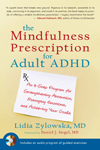A Mindful Approach to Procrastination
On college campuses across the country, ‘tis the season…to procrastinate. Mindfulness offers a strategy to get moving.
On college campuses across the country, ‘tis the season…to procrastinate. Mindfulness offers a strategy to get moving.
Albert Schweitzer said, “At times our own light goes out and is rekindled by a spark from another person. Each of us has cause to think with deep gratitude of those who have lighted the flame within us.”
Nowhere is this spark as bright than in the heart of a youth. Nowhere does there lay a stronger elixir to waken your purpose than in the sparkling enthusiasm of a child’s spirit. And nowhere is there a grander purpose than the need to ease the suffering of a child.
Great question! As a certified MBSR teacher and teacher trainer – for the UMass Center for Mindfulness and a mentor for the UCSD Mindfulness-Based Professional Training Institute (MBTI), I get asked this question more and more. If you look at the prerequisites for teaching MBSR or other MBI’s all over the world, the recommendation for personal retreat practice is consistent. To answer the question, I may start by quoting the originator of MBSR; Dr.
Online Training for Teaching Mindfulness In Your Clinical Practice
 UCSD Mindfulness-Based Professional Training Institute is now offering Mindfulness for ADHD: Training for Adults, Parents and Professionals. The training will take place August 7-10, 2014 at Earthrise Retreat Center in Petaluma, CA. The training is a retreat-version of the 8-week MAPs for ADHD that my colleagues and I originally developed at UCLA.
UCSD Mindfulness-Based Professional Training Institute is now offering Mindfulness for ADHD: Training for Adults, Parents and Professionals. The training will take place August 7-10, 2014 at Earthrise Retreat Center in Petaluma, CA. The training is a retreat-version of the 8-week MAPs for ADHD that my colleagues and I originally developed at UCLA.
Recently the New York Times featured an article titled “Exercising the Mind to Treat Attention Deficits” by Daniel Goleman which highlighted the usefulness of mindfulness training for Attention Deficit Hyperactivity Disorder (ADD/ADHD). It is exciting to see a publication like NYT and the conventional ADHD researchers starting to see value of mindfulness for ADHD.
When challenging or unwanted thoughts, emotions or behaviors arise most of us want to avoid or distract ourselves. We may use food, drugs, work or exercise to temporarily sooth, comfort or numb the difficult internal experience. Unfortunately, repeatedly coping in this way creates a habituated pattern that carries with it more shame and fear, and the hope of change slips further away into a seemingly endless out-of-control cycle.
You know something’s working when it makes it to the big time “for Dummies” book publishing.
In June I packed a suitcase to spend a week in the desert, my meditation cushion and yoga mat taking up most of the space. I journeyed to Joshua Tree, California with about 50 other people for the inaugural Mindfulness-Based Stress Reduction Teacher Training through the University of California at San Diego’s Center for Mindfulness.
 .b pronounced (dot-be), stands for “Stop, Breathe and Be!” This simple act of mindfulness provides the kernel of a nine-lesson course for schools.
.b pronounced (dot-be), stands for “Stop, Breathe and Be!” This simple act of mindfulness provides the kernel of a nine-lesson course for schools.
Scroll to Top